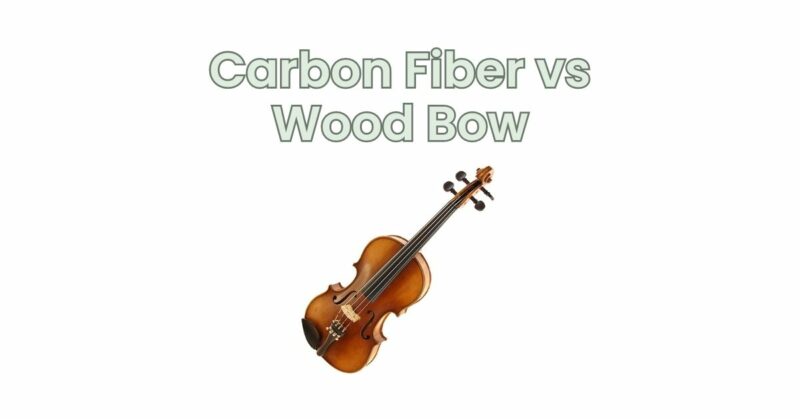The choice of bow is a crucial decision for violinists, as it significantly impacts the sound, playability, and overall performance. While traditional wooden bows have long been favored, carbon fiber bows have gained popularity in recent years. Each type of bow offers distinct advantages and characteristics that appeal to different musicians. In this article, we will explore the differences between carbon fiber and wood bows, highlighting their unique attributes and helping you make an informed decision when selecting a bow for your violin.
- Materials and Construction: Wood bows are traditionally crafted from high-quality Pernambuco or other fine woods, known for their strength, flexibility, and responsiveness. On the other hand, carbon fiber bows are engineered using advanced composite materials, resulting in a lightweight and durable construction. Carbon fiber bows often feature a graphite or carbon fiber shaft and synthetic materials for the frog and other components.
- Stability and Durability: One significant advantage of carbon fiber bows is their stability and durability. Unlike wood bows, which can be affected by changes in temperature and humidity, carbon fiber bows are more resistant to environmental variations. This stability allows carbon fiber bows to maintain their shape and performance characteristics over time, making them a reliable choice for musicians who travel frequently or perform in diverse climates.
- Sound Projection and Tonal Characteristics: Wood bows are renowned for their tonal richness and warmth. They often produce a traditional, classic sound that appeals to many violinists. Carbon fiber bows, on the other hand, tend to offer a brighter and more focused sound with enhanced projection. They can deliver clear articulation and a well-defined, precise tone, making them particularly suitable for contemporary and amplified performances.
- Responsiveness and Playability: Both wood and carbon fiber bows can offer excellent responsiveness, but they may differ in their feel and playability. Wood bows are known for their natural flexibility, allowing violinists to produce a wide range of dynamic nuances and expressive playing. Carbon fiber bows, while slightly stiffer, can provide enhanced control and quick bow response, making them well-suited for rapid passages and technical playing.
- Maintenance and Longevity: Wood bows require regular maintenance and care to maintain their optimal performance. They may need rehairing periodically, and their susceptibility to environmental changes means they must be stored in controlled conditions. Carbon fiber bows, on the other hand, are less demanding in terms of maintenance. They are less affected by humidity, require less frequent rehairing, and generally offer greater longevity.
- Cost Considerations: In terms of cost, carbon fiber bows often provide a more affordable alternative to high-quality wooden bows. While wooden bows can vary significantly in price depending on the quality of the wood and craftsmanship, carbon fiber bows generally offer consistent performance at a more accessible price point.
Conclusion: Choosing between a carbon fiber and wood bow ultimately comes down to personal preference and musical style. Wood bows offer a traditional, warm sound and a natural feel that many violinists appreciate. Carbon fiber bows, on the other hand, provide stability, durability, and enhanced projection, making them suitable for a range of musical genres and performance settings. Consider factors such as sound preference, playing style, maintenance requirements, and budget when making your decision. Ultimately, the right choice is one that resonates with your musical goals and allows you to achieve your desired sound and expression on the violin.

